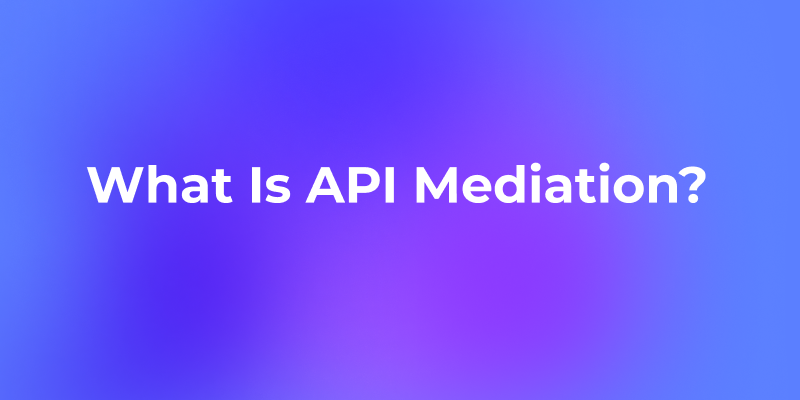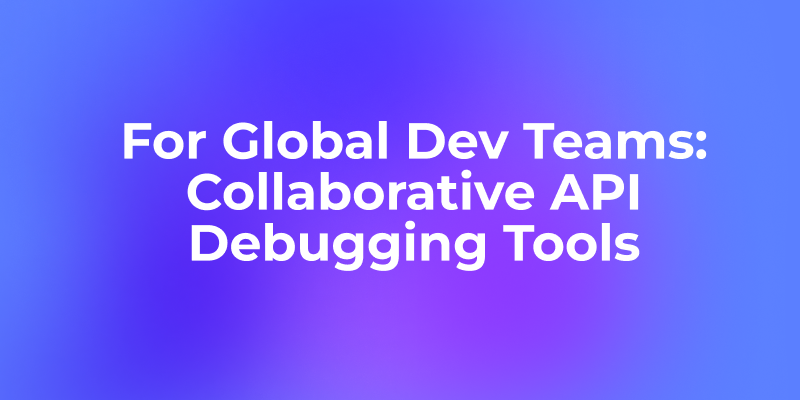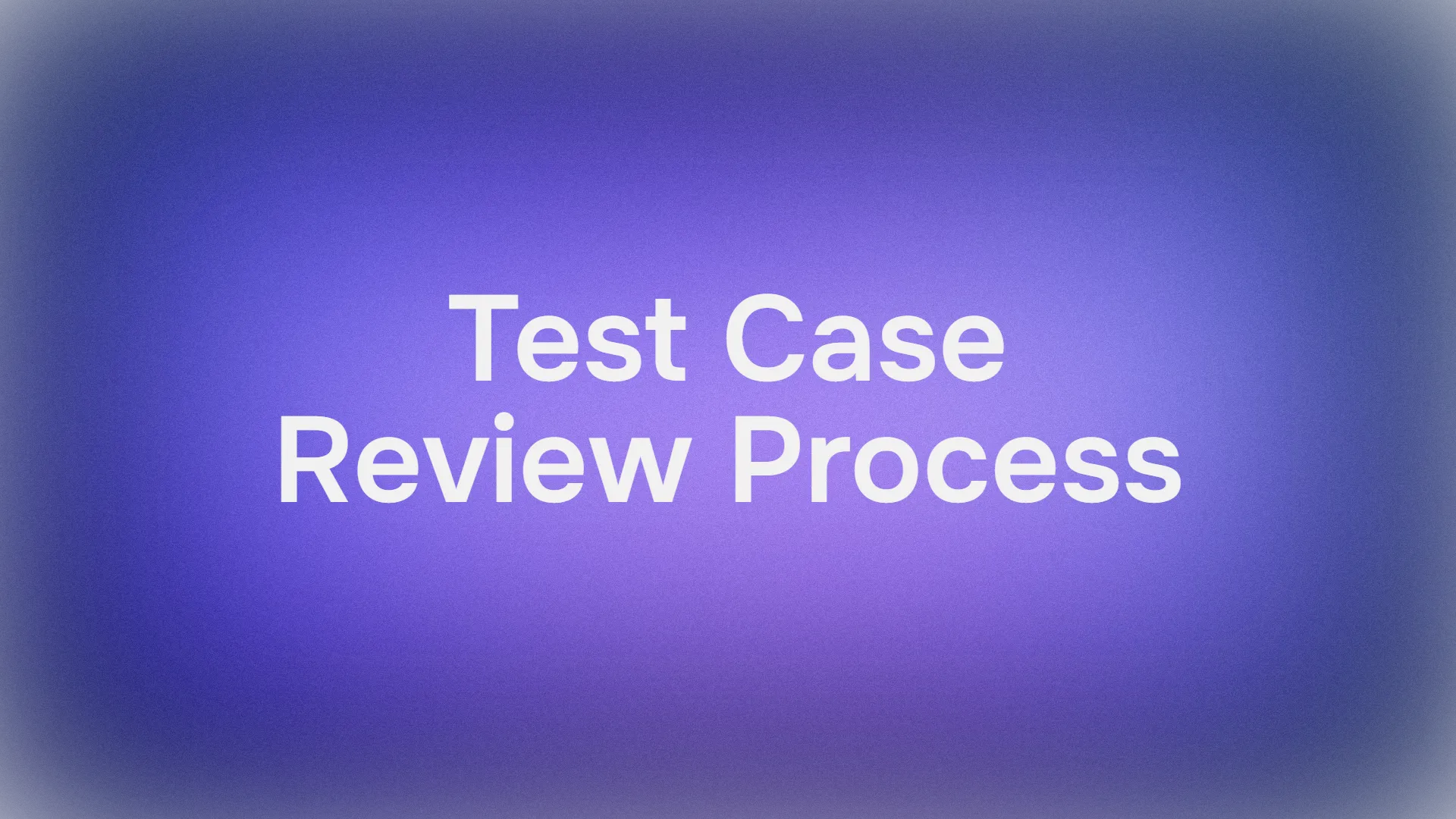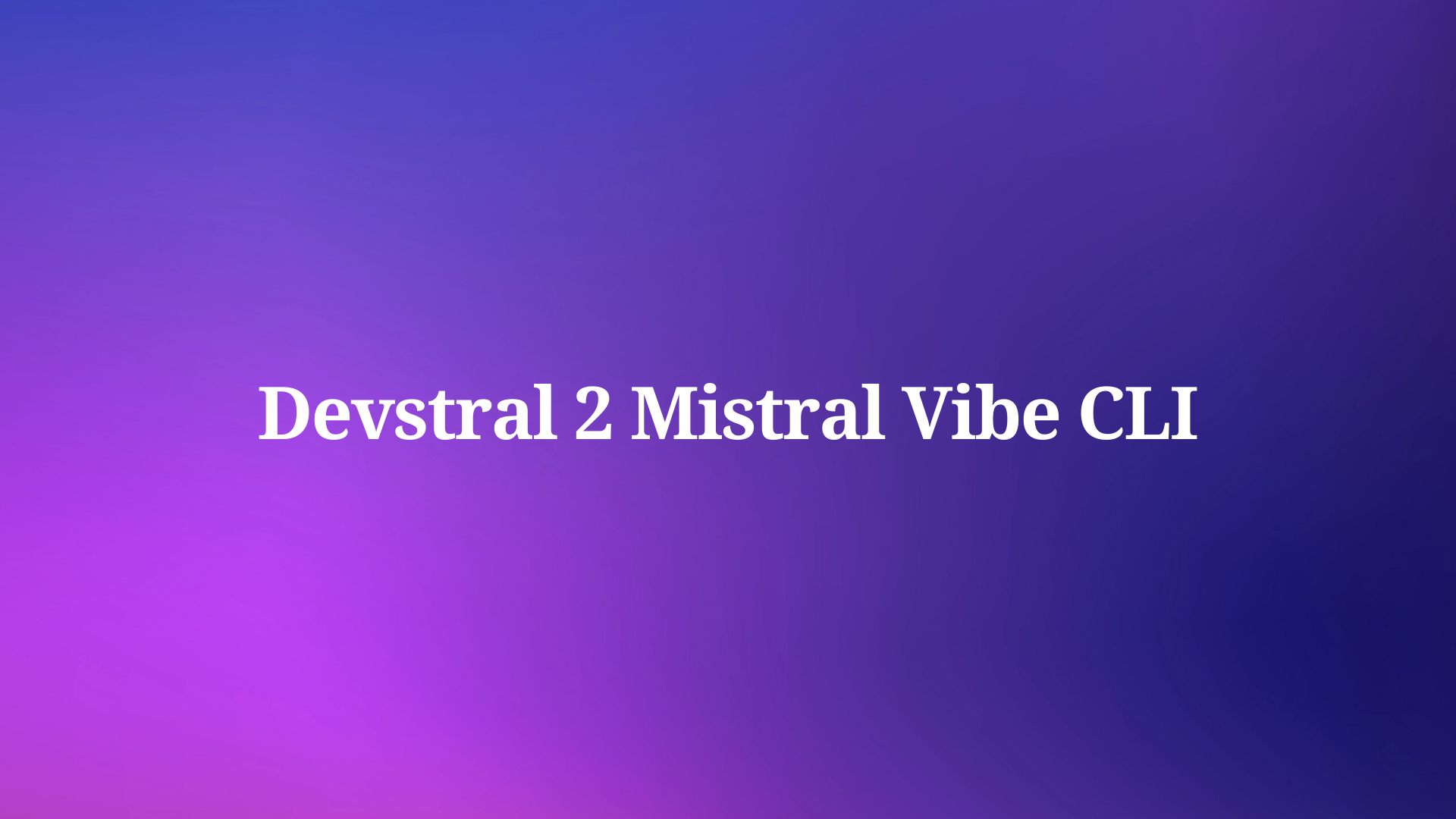If you've worked with APIs for any length of time—whether as a developer, architect, or just someone curious about how software communicates—you've probably run into this problem: the more APIs you have, the more complex your system becomes.
Imagine you're building a new feature for your company's mobile app. To get it working, you need:
- Customer data from one service
- Order history from another
- Shipping status from a third
The catch? Each service has a different endpoint, a different login method, and a slightly different format for sending data.
This is where API mediation comes in. Think of it as a middle layer that smooths out the differences so your APIs can work together. Without mediation, you’re left juggling a mess of:
- Different authentication methods
- Incompatible data formats
- Old protocols (hello, SOAP)
- Random outages or maintenance windows
What should have been a simple task quickly turns into days of debugging and frustration.
Sound familiar? You're not alone. This tangled web of endpoints and protocols is exactly what API mediation is designed to solve. It creates a consistent, reliable way for services to interact, which is critical for building secure, scalable applications.
That's also why tools like Apidog are so valuable. Apidog is an all-in-one platform that lets you design, mock, test, debug and document APIs in one place—making API chaos much easier to manage. You can even download it for free to start untangling your own APIs as you learn more about mediation.
Stick around, and by the end of this post you’ll understand API mediation like a pro. Let’s dive in: what exactly is API mediation, and why is it such a big deal in modern software architecture?
The Modern API Spaghetti: Why We Need a Mediator
In the early days of web applications, things were simpler. A single monolithic application often handled everything. But as businesses grew, this approach became unwieldy. The solution? Microservices architecture.
Instead of one giant application, companies broke their software down into dozens, sometimes hundreds, of smaller, independent services. Each service is responsible for one specific business function: a user service, an order service, a payment service, an inventory service, you name it.
This is great for development speed and scalability. Different teams can work on different services without stepping on each other's toes. However, it creates a massive new problem for the consumers of these services, like your front-end web app or your mobile app.
Now, your client doesn't just have to talk to one "kitchen"; it has to talk to twenty different "kitchens," each with its own unique:
- API Endpoint: Different URLs and addresses.
- Protocols: Some might use REST, others GraphQL, gRPC, or even old-school SOAP.
- Authentication: Different ways to log in (API keys, OAuth 2.0, JWT tokens, etc.).
- Data Formats: Variations in how data is structured (e.g., one service calls a user field
firstName, another usesfirst_name). - Versioning: One service might be on v1, another on v3, each with breaking changes.
For a client application, managing all these differences is a nightmare. It becomes tightly coupled to the messy internals of your backend. If you change a service's API, you might have to update every single client that uses it. This is where the "mediator" comes in.
What Is API Mediation? The Grand Central Station for Your APIs
API mediation is the process of placing an intermediary layer (a mediator) between your API consumers (apps, clients, or users) and the backend services (your actual APIs) to standardize, simplify, and manage communication. This layer acts as a single, unified entry point for all client requests, handling the complexities of communicating with the various backend services behind the scenes.
Think of it as building a Grand Central Station for all your API traffic.
Instead of every train (client request) trying to find its way to dozens of different, far-flung train yards (backend services) on its own, they all arrive at one central, well-organized station. The station's traffic controllers (the mediation layer) know exactly where each train needs to go. They might even combine cargo from multiple trains, change the language of the instructions, or make sure the train has the right credentials to enter the yard. Think of it as a translator and traffic controller rolled into one.
The client no longer needs to know the intricate details of every service. It just talks to the mediator in one consistent way. This simplifies client development, improves security, and adds incredible flexibility for the backend teams.
Why does this matter? Backend services can be complex with different protocols, security needs, and formats. API mediation "smooths out" these differences, so developers using your APIs get a great, consistent experience without needing to worry about what’s going on behind the scenes.
Breaking It Down: API Mediation Layer
The API mediation layer is usually implemented using an API gateway or specialized gateway components. It:
- Converts backend resources (like SOAP, JMS, POX, or modern RESTful APIs)
- Handles different network protocols, message formats, and security methods
- Delivers a virtualized API endpoint tailored to consumer needs
Think of it like a concierge at a hotel who knows all the ins and outs behind the scenes and ensures the guest (API consumer) gets a perfect, simplified experience.
Why API Mediation Matters: Key Benefits
Now, you might be asking: “Why not just let services talk to each other directly?”
Well, without mediation, you run into problems like:
- Inconsistency: APIs return data in different formats (JSON, XML, etc.).
- Complexity: Developers need to know the specifics of every backend API.
- Security risks: Exposing raw APIs directly increases vulnerabilities.
- Scalability issues: Making multiple direct calls slows things down.
API mediation doesn’t just make life easier for developers, its benefits ripple across security, scalability, and business agility:
- Stronger security: Centralized authentication, encryption, and protocol management reduce risks and data breaches.
- Improved developer experience: Developers get clean, standardized endpoints without wrestling with backend complexity.
- Flexibility and scalability: The mediation layer can handle traffic management, load balancing, and rate limiting, supporting growth effortlessly.
- Faster time-to-market: By decoupling backend services from frontend APIs, teams can innovate and deploy faster.
- Protocol and message transformation: The mediation layer transforms requests and responses to match client expectations (e.g., JSON to XML, REST to SOAP).
The Key Pillars: What Does an API Mediator Actually Do?
An API mediation layer isn't just a fancy router. It's a powerful piece of infrastructure that performs several critical functions. Let's break down its superpowers.
1. API Gateway: The Front Door and Traffic Cop
This is the most fundamental role. The API Gateway is the single entry point that all clients use. It receives requests and routes them to the appropriate backend service. But it does so much more:
- Request Routing: Directing
/users/requests to the user service and/orders/requests to the order service. - Protocol Translation: Allowing a client to send a simple REST request, which the gateway then translates into a GraphQL query or gRPC call for the appropriate backend service. The client is none the wiser!
- Rate Limiting & Throttling: Protecting your backend services from being overwhelmed by too many requests, whether from a single user or from overall traffic. It's the bouncer at the door.
- SSL Termination: Handling the encryption/decryption of HTTPS traffic, offloading that computationally expensive work from the backend services.
2. Authentication and Authorization: The Security Bouncer
"Who are you, and what are you allowed to do?" The mediation layer is the perfect place to answer this question centrally.
- Centralized Auth: Instead of every service implementing its own login logic, the gateway validates every incoming API token (like a JWT). Once a request is authenticated, it can forward the request to the backend service with the user's identity already confirmed.
- Policy Enforcement: The gateway can check if the authenticated user has permission to access a specific endpoint before the request even reaches the service.
3. Transformation and Orchestration: The Master Chef
This is where the magic really happens. A simple router sends a request to one service. A mediator can combine and transform data.
- Data Transformation: The backend service might return data in an inconvenient format. The mediation layer can transform that response into a cleaner, more client-friendly format before sending it back. For example, renaming
first_nametofirstNameor filtering out unnecessary fields to reduce payload size. - API Orchestration: This is a killer feature. A client might need data from multiple services to fulfill a single request. Instead of the client making 5 separate API calls (which is slow and fragile), it makes one call to the mediator.
The mediator then makes the 5 necessary calls to the backend services, combines the results, and sends back one unified response. This is often called the Backend for Frontend (BFF) pattern, as it creates a tailored API specifically for the needs of a particular client.
4. Resilience and Reliability: The Shock Absorber
The backend world is unpredictable. Services go down, they get slow, they break. The mediation layer can shield the client from these failures.
- Circuit Breaking: If a backend service starts failing or responding very slowly, the mediator can "trip the circuit." This means it will stop sending requests to that service for a period of time, giving it time to recover, and instead return a graceful error message to the client. This prevents a single failing service from bringing down the entire system.
- Retries: If a request to a backend service fails due to a temporary network glitch, the mediator can automatically retry the request.
- Caching: For responses that don't change often (like a list of product categories), the gateway can cache the response. The next time a client asks for the same data, it can be returned instantly from the cache without bothering the backend service, dramatically improving performance.
5. Monitoring and Analytics: The Watchtower
With all API traffic flowing through a central point, you get a golden opportunity to observe everything.
- Logging: You can log every request and response for auditing, debugging, and compliance purposes.
- Metrics: You can collect vital metrics like how many requests per second you're handling, what your average response time is, and which endpoints are the most popular. This data is invaluable for performance tuning and capacity planning.
These components turn a messy set of APIs into a well-orchestrated system.
API Mediation vs API Gateway
At this point, you might be thinking: “Isn’t this just an API gateway?”
Well, not exactly.
- API Gateway → Primarily handles request routing, load balancing, rate limiting, and security. It’s about controlling traffic.
- API Mediation → Goes a step further, focusing on data transformation, orchestration, and standardization. It ensures APIs actually work well together.
In fact, many gateways now include mediation features, but the concepts are distinct.
API Mediation vs API Management
Another common confusion: mediation vs management.
- API Management → The broader discipline of designing, publishing, securing, monitoring, and monetizing APIs. Think strategy + governance.
- API Mediation → A specific technical practice focused on smoothing communication between APIs.
So, mediation is one piece of the bigger API management puzzle.
API Mediation vs API Orchestration vs API Proxies
Sometimes these terms get tossed around interchangeably, but they’re distinct:
- API Mediation: Focuses on transforming and adapting communication between APIs and their consumers. It handles protocol translation, security enforcement, and API customization.
- API Orchestration: Combines multiple backend services into a single API endpoint, aggregating and transforming data.
- API Proxies: Basic layers forwarding requests between clients and APIs, typically without much transformation or security enforcement.
Mediation often works alongside orchestration and proxies, but it offers more sophisticated messaging, security, and protocol handling.
Real-World Use Cases: Where API Mediation Saves the Day
This all sounds great in theory, but how is it used in the real world? Let's look at a few scenarios.
- Modernizing Legacy Systems: A large bank has a critical mainframe application that speaks only SOAP. They want to build a new mobile app that needs data from this mainframe. Instead of forcing the mobile developers to work with SOAP, they can put an API mediation layer in front of it. The mobile app sends a clean, modern REST request to the gateway, which translates it into a SOAP message for the mainframe, and then translates the SOAP response back to JSON for the app. The legacy system is modernized without changing a single line of its code!
- The Multi-Platform Company: Think of a company like Netflix. Their backend is a complex mesh of microservices for user profiles, movie metadata, recommendations, billing, and streaming. The Netflix UI on your TV is very different from the UI on your phone or web browser. Each of these clients has different data needs. Using the BFF pattern, Netflix can have a different API mediation "adapter" for each client type (TV, iOS, Android, Web). Each adapter orchestrates the backend calls specifically for its client, providing a perfectly optimized experience.
- The Third-Party Developer Ecosystem: If you offer a public API for partners and third-party developers, an API gateway is non-negotiable. It's how you enforce rate limits, manage API keys, provide documentation, and ensure a consistent and reliable experience for all your external users, protecting your own services from abuse.
How Tools Like Apidog Fit Into the Picture
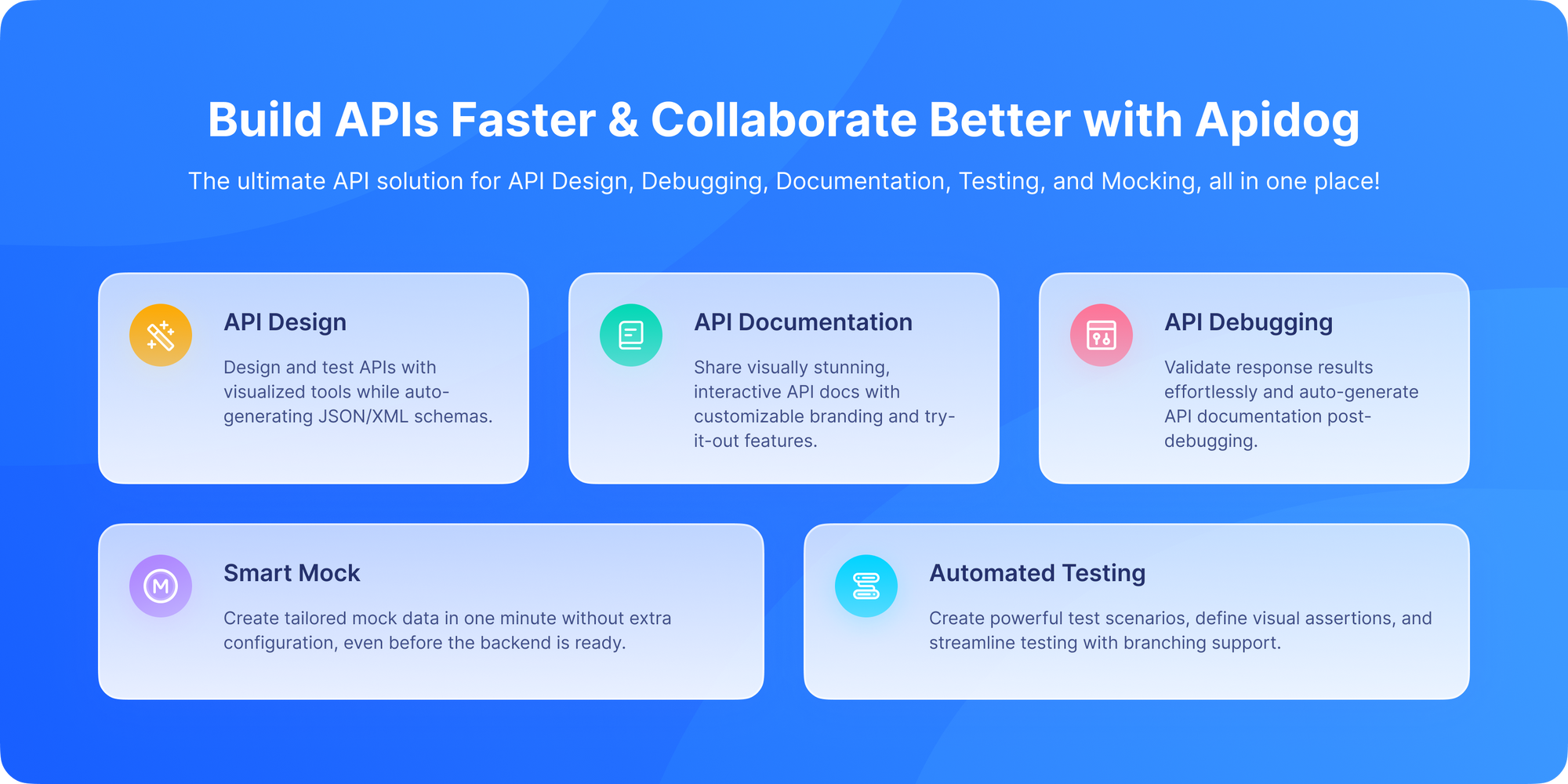
You might be wondering, "Where does a tool like Apidog fit into all this?" Apidog is an integrated collaboration platform for API design, development, testing, and documentation.
While Apidog isn't itself the runtime mediation layer (like a gateway), it is an essential tool for designing and managing the APIs that the mediation layer will front. Here’s how:
- Design-First Approach: You can use Apidog to design your unified, mediated API contract first. You define the endpoints, requests, and responses that your clients will see before any code is written. This ensures consistency and clarity.
- Mock Servers: Once you've designed your mediated API in Apidog, you can instantly generate a mock server. This allows front-end and client developers to start building and testing their code against a realistic simulation of the final API, even before the backend mediation logic is fully built. This parallelizes development and speeds everything up.
- Testing the Mediation Layer: You can use Apidog to create comprehensive test cases to rigorously test your actual API gateway and mediation logic once it's built. You can simulate high load, faulty responses, and edge cases to ensure your mediation layer is resilient and performs as expected.
- Documentation: A central mediation layer is pointless if developers don't know how to use it. Apidog automatically generates beautiful, always-up-to-date documentation from your API designs, making it easy for all consumers to understand how to interact with your unified API.
In essence, Apidog is the design and testing cockpit for the API mediation "aircraft", helping you build it right and keep it flying smoothly.
Best Practices for API Mediation Implementation
So, how do you actually get started? To make the most of API mediation:
- Treat APIs like products, prioritizing developer experience.
- Centralize security policies and avoid over-complex mediation logic to keep layers manageable.
- Use consumer-driven API design to keep outer APIs tailored to client needs.
- Ensure high availability and redundancy in your API gateway infrastructure.
- Leverage monitoring and metrics to continually optimize performance.
By following these, you’ll avoid common pitfalls.
Conclusion: Embracing the Mediator for a Smoother Future
API mediation is more than a technology—it's an architectural pattern that sits between clients and backend APIs to simplify, standardize, and secure communication.
In practice, API mediation:
- Reduces complexity
- Improves performance
- Provides consistent, secure access to APIs
- Decouples clients from messy backend systems
Think of it as the Grand Central Station of your API traffic, turning chaos into order and enabling scalability, resilience, and agility.
Of course, mediation isn't automatic—you still need the right strategy, monitoring, and tools. That's where Apidog comes in. With its design, mocking, and testing features, Apidog helps your mediation layer deliver on its promise.
As your API ecosystem grows, investing in mediation will be key to the long-term reliability of your software—whether you’re building an e-commerce app, a banking platform, or the next SaaS product.
